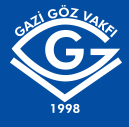2MD, Edirne Sultan 1. Murad State Hospital, Department of Ophthalmology, Edirne,Turkey
3MD, Trakya University School of Medicine, Department of Ophthalmology, Edirne, Turkey
4Assoc. Prof., MD, Trakya University, School of Medicine, Department of Ophthalmology, Edirne, Turkey DOI : 10.37845/ret.vit.2021.30.65 Purpose: The aim of this study was to evaluate and report the complication rates, and anatomical and functional outcomes of eyes undergoing inferior retinectomy for the management of recurrent rhegmatogenous retinal detachment (RRD) due to inferior proliferative vitreoretinopathy (PVR).
Materials and Methods: This retrospective, non-comparative, interventional case series was conducted with 32 eyes of 32 patients with recurrent RRD due to inferior PVR who had previously undergone 23-gauge pars plana vitrectomy (PPV) and inferior retinectomy. Demographic data, and preoperative, intraoperative and postoperative characteristics were evaluated from the medical records of the patients. The anatomic and functional success were considered as the primary outcomes. The secondary outcome was the postoperative complications.
Results: The mean follow-up time after the PPV with retinectomy was 10.6 ± 4.9 (min. 6, max. 24) months. After the initial retinectomy, anatomic success was achieved in 22 (68.7%) patients. Overall, the retinas of 27 patients (84.4%) were successfully reattached after retinectomy and PPV at the last visit. The mean best-corrected visual acuity (BCVA) improved from 1.72 ± 0.97 LogMar (range, 3.0-0.4 LogMar) to 1.20 ± 0.65 LogMar (range, 3.0-0.3 LogMar) at the fi nal visit. There was a statistically signifi cant increase in visual acuity postoperatively (p = .01). At the last visit, BCVA was improved in 19 eyes (59.4%), stabilized in 8 eyes (25%) and decreased in 5 eyes (15.6%). The most signifi cant factor affecting the fi nal BCVA was the baseline visual acuity (p = .002). Two patients (6.2%) developed hypotonia postoperatively. None of the cases presented with endophthalmitis, keratopathy or postoperative phthisis bulbi.
Conclusion: Inferior retinectomy is effective in managing recurrent RRD cases due to inferior PVR and can increase functional success rates.
Keywords : inferior retinectomy; pars plana vitrectomy; proliferative vitreoretinopathy; recurrent retinal detachment; rhegmatogenous retinal detachment




